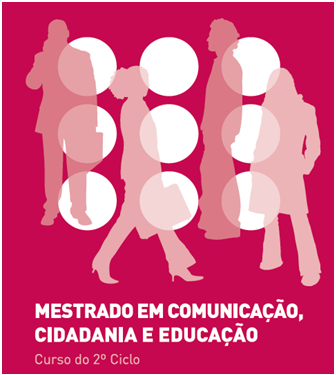Uma das mais importantes organizações de educação para os media dos Estados Unidos da América, a AMLA - Alliance for a Media Literate America - realizou recentemente em Baltimore a sua conferência anual e, como resultado, disponibilizou no seu site um conjunto de documentos e informações dignos de interesse.
Destaco, nomeadamente, o texto de um veterano da educação para os media, o australiano Barrie MacMahon, docente da Edith Cowan University, intitulado RELEVANCE AND RIGOUR IN MEDIA EDUCATION, e Media Literacy: A Guided Tour of the Best Resources for Teaching , preparado por Elizabeth Thoman.
De entre os recursos referenciados neste último texto, refiro alguns, pelo menos para que os interessados fiquem a saber que existem:
a) Elementary language arts/literacy :
· I Wanna Take Me a Picture: Teaching Photography and Writing to Children
· Writing Mysteries, Movies, Monster Stories, and More
· The Young Journalist’s Book: How to Write and Produce your Own Newspaper
· The Ultimate Guide to Classroom Publishing
· Lights, Camera, Action! – help kids create their own video productions.
b) Middle School:
· We Interrupt this Broadcast: Events that Stopped our Lives
· And the Crowd Goes Wild: 47 of the Greatest Moments in Sports
· Stay Tuned: Television’s Unforgettable Moments
· What We Saw – the Events of 9/11
c) Thematic units in social studies (middle or high school):
· Empire of the Air: The Men Who Made Radio – a Ken Burns’ documentary
· Sell and Spin: A History of Advertising
· A Video History of Newspapers
· The Battle over Citizen Kane -- filmmaker Orson Welles vs. publishing magnate William Randolph Hearst.
· Dot Con - the chronicle of the burst of the Internet bubble
· The Living Room Campaign -- a comprehensive collection of political TV spots and advertising starting in 1952.
d) Film Study and Visual Literacy
· Understanding Comics is a terrific resource to explore “sequential art” and the principles of visual storytelling.
· Reading the Movies overviews the language of film and outlines curriculum units to explore “12 great films on video.”
· Reel Conversations: Reading Films with Young Adults introduces a tri-level film analysis technique.
· Reading in the Dark: Using Film as a Tool in the English Classroom
· Cinema-(To)-Graphy provides fresh ideas on integrating film and media into the student writing process.
· Seeing and Believing: How to Teach Media Literacy in the English Classroom.
e) Professional Development
· Teaching the Media by Len Masterman / the ground-breaking book that is still the foundation for inquiry-based media education around the world.
· Literacy in a Digital World: Teaching and Learning in the Age of Information by Kathleen Tyner / the first and still primary guide to media literacy in a US educational context.
· Growing Up with Television: Everyday Learning among Young Adolescents by JoEllen Fisherkeller / a first longitudinal research study examining how young people make sense of the media culture in which they are growing up.
· The Real Thing: Doing Philosophy with Media by Christina Slade / breakthrough thinking on how children perceive and process their televisual world.
· Good Guys Don’t Wear Hats by Joseph Tobin / the first media literacy research project on US kids and US media. A fascinating insight into the world of children and media.
· TV or No TV? A Primer on the Psychology of Television by Faye Steuer and Jason Hustedt / a reasoned review of the major research issues on television in the lives of children.
· Teaching Youth Media by Steven Goodman / a close look at the problems and possibilities of video production to transform the lives of urban youth.
· The Children are Watching: How the Media Teach about Diversity by Carlos Cortes / the acclaimed educator reflects on media in today’s multicultural world.
· Visual Messages: Integrating Imagery into Instruction by David Considine and Gail E. Haley / a comprehensive introduction to media literacy pedagogy and practice.
· Media Literacy Resource Guide: Ministry of Education, Province of Ontario / the roadmap for the development of media literacy in Canadian schools. An essential reference.
· Screening Images: Ideas for Media Education by Chris Worsnop / the aforementioned “hip-pocket” guide to media education.
· Increasing Student Learning through Multi-Media Projects / a 3-part “field guide” ensures that multimedia projects are pedagogically sound; includes book, CDRom and Video.
Subscrever:
Enviar feedback (Atom)





Sem comentários:
Enviar um comentário